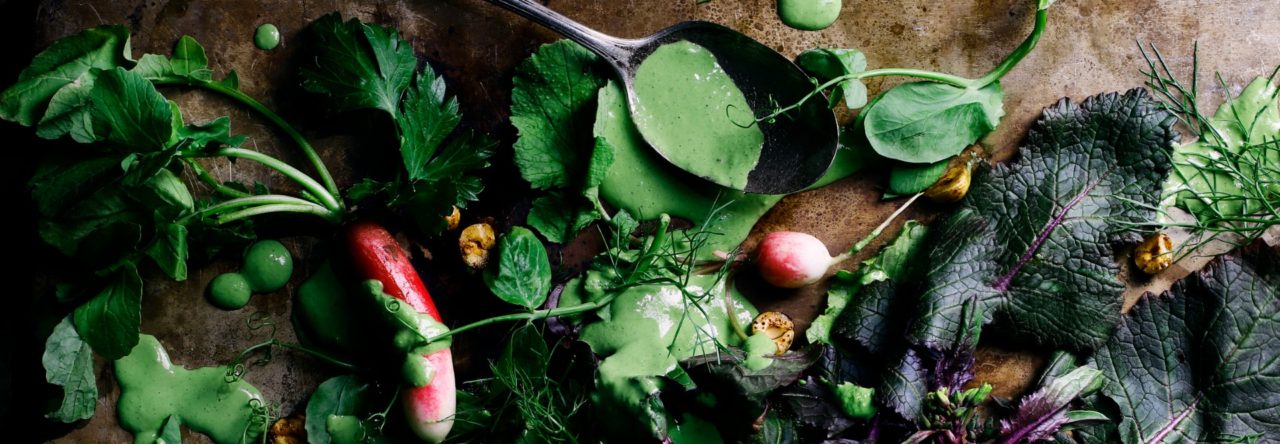Hazelnut Orange Blossom Baklava
Makes one 13 x 9 inch pie, serving at least 8 to 10
To know baklava is to yearn for it: that meltingly crisp confection of sticky syrup, golden phyllo and crunchy nuts typically is love at first bite. Baklava is known in many forms through the Mediterranean and Middle East and makes an ideal ending to any meal from those cuisines. Or any meal (or tea time or naughty breakfast treat), period.
I use olive oil in sweets all the time, and was pretty thrilled to learn that truly ancient Greek preparations of baklava used olive oil, not melted butter. Olive oil is still a popular addition to baklava in Greece, where typically a combination of butter and oil is used, as in this recipe with vegan butter (good quality vegan buttery spread, that is).
My absolute favorite version is filled with the necessary walnuts plus hazelnuts (with perhaps a touch of almonds), chopped very finely as to form a gritty, dense filling. You want it semi-sandy, but not exactly finely ground or nut butter. If you have some shelled green pistachios on hand, toss them into the filling to for an even richer treat. The syrup is spiked with orange flower water for a delicate, perfume like treat; rose water is a close second choice and will make a gorgeous dessert either way. Baklava is really special served slightly warm, so consider gently toasting cold baklava before serving. With all the syrup this keeps very well for at least 3 days, if it even lasts that long.
Ingredient tip:
Look for orange flower water in gourmet stores in their baking isle. Orange flower water does not taste like oranges; it has a light floral scent that helps give agave a honey-like aroma.
To remove the skins from hazelnuts, gently toast them at 300 degrees for 8 to 12 minutes until fragrant and the skins are cracked. Pour into a rough-textured clean dish towel, wrap into a tight hobo-style pouch with one hand and use the other hand to roughly massage the pouch. The hazelnuts rubbing against each other will loosen the skins, plus the heat will help steam the skins off. Continue for about 5 minutes, shake the pouch a few times and carefully open. Most of the skins should be shed and the newly naked nuts on top; a little bit of skin might remain here and there but that’s okay. Pick off the hazelnuts and shake the towel in the garbage, a sink or outside in the garden (but probably not out your apartment window!)
Tips for using phyllo dough (for easier phyllo finagaling):
- -Create plenty of work space. You’ll need enough room on the kitchen counter or a tabletop to fit side by side the phyllo dough, the pan you’re baking it in, plus bowls for the filling and oil/margarine mixture.
- -Phyllo dough must always be protected against drying out while using. The easiest way is to sandwich the stack of dough sheets between plastic wrap and then top the plastic wrap with a clean dish towel. Always keep unused phyllo covered.
- -To prepare the phyllo dough for use, gently remove completely thawed phyllo from the package and carefully unroll. Work fast and with a very sharp knife trim the phyllo to fit the insides of the pan. Layer the trimmed sheets on top of each other, then sandwich the sheets between to pieces of plastic wrap or waxed paper.
- -To oil a sheet of phyllo, pull back the dish towel and carefully remove a sheet and fit into the well-oiled baking pan the phyllo sheets were cut to fit into. Immediately cover up the remaining phyllo sheets, then use a pastry brush dipped in the oil or an oil/margarine mixture to sprinkle plenty of oil over the phyllo. Then use long, gently brush strokes to completely spread the oil over the dough, dipping the brush into the oil if the dough looks a little bit dry.
- -Repeat with removing a sheet from the stack, covering the sheets, layering the new phyllo sheet on top of the oiled sheets and dribble and brush with oil.
- -Avoid touching phyllo with wet fingers or placing phyllo dough on a wet counter top, or the sheets will stick together and make a mess. To guard against any unwanted moisture on the work surface, sprinkle your phyllo work surface with all purpose flour. This is especially helpful when making individual phyllo pies. If phyllo layers do stick together, use the tip of a sharp knife to separate them and sprinkle the damp parts of the sheets with a little bit of flour. Remember to cover up the dough to keep it from drying out!
- -Gently roll and tightly wrap any unused phyllo dough. Once thawed it should not be frozen again, but it can be kept in the refrigerator for about 2 weeks.
Orange flower syrup:
- 3/4 cup sugar
- 3/4 cup water
- 1/2 cup dark agave nectar
- 2 tablespoons lemon juice
- 1 teaspoon orange flower water
Filling:
- 1 cup very finely chopped walnuts
- 1 cup very finely chopped hazelnuts (skins removed), or a mix of hazelnuts and blanched almonds
- 1/2 teaspoon ground cinnamon
- 1/4 teaspoon ground nutmeg or cloves
- 2 tablespoons sugar
- 2 tablespoons melted vegan margarine
Phyllo:
- 8 tablespoons (1 cup or stick) of vegan margarine, melted
- 1/2 cup olive oil
- 1 pound of frozen phyllo dough, approximately twenty 13” x 18” sheets, completely thawed. You will have some leftover sheets.
1. Prepare the syrup and the filling first. In a large sauce pan combine all of the ingredients except the orange flower water and bring to a boil over high heat. Reduce the heat to medium and simmer for 10 minutes, swirling the pan occasionally. Turn off heat and stir in orange flower water. Set aside to cool. For the filling, thoroughly combine all of the ingredients in a mixing bowl.
2. Preheat the oven to 350 degrees F. In large cup stir to combine the melted margarine and olive oil. Use this mixture to generously brush the insides of a 9 x 13 x 2 inch ceramic or metal baking pan. Prepare the phyllo dough for use as directed above, slicing the sheets in half (or whatever size necessary) so that the can fit inside of the pan. Arrange a sheet of trimmed phyllo into the bottom of the pan.
3. Using a pastry brush, lightly brush this sheet of phyllo with the oil mixture, top with another sheet and repeat until you have 10 layers total. Spread half of the filling evenly over the phyllo. Repeat another layering of phyllo brushed with the oil for 10 sheets total, then spread the other half of filling over this layer. Top the filling with a final layer of 10 sheets of dough and gently press the baklava down. Using a thin, sharp serrated knife and pressing down on sections of the baklava to keep it from moving around too much, cut the pie all the way through to the bottom into diamonds or squares about 2 inches wide. Move the baklava to the oven and bake for 18 minutes, then remove from the oven. Pour the leftover oil mixture evenly over the top and bake for 22-26 minutes or until the top is a very light golden brown and lightly puffed. Remove the baklava from the oven and let stand for 5 minutes.
3. Use a spoon to carefully and slowly pour the syrup only between the slices of the baklava. It may look like there’s a lot of syrup and it will pool between the slices at first, but that’s okay. Avoid pouring directly on top of the baklava too much; this will help keep the top layers of phyllo retain their flakey texture. Loosely cover the top of the baklava with plastic wrap and let stand for at least 1 1/2 hours or longer to allow the syrup to soak into the pastry. Serve at room temperature or just barely warmed. Store loosely covered at room temperature for up to 3 days.
Variation:
-Replace orange flower water with rose water, or use a teaspoon of both for a really lovely aromatic baklava.
-Stir 1/2 cup finely grated semi-sweet chocolate into the nut filling before sprinkling into the baklava.








